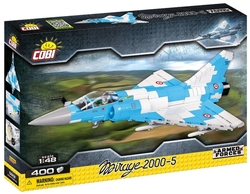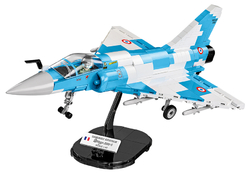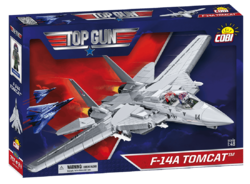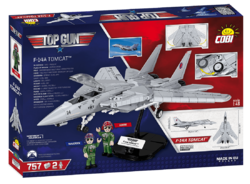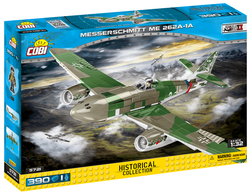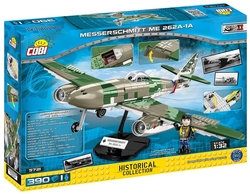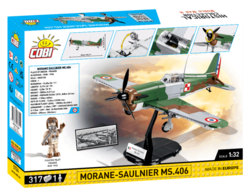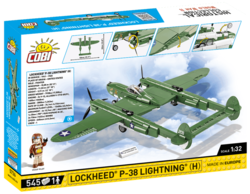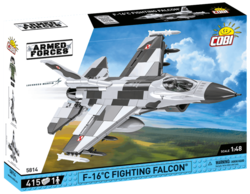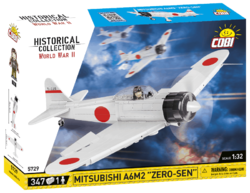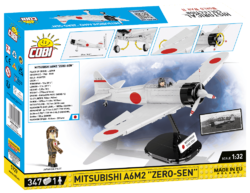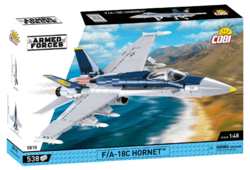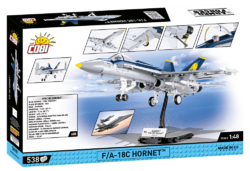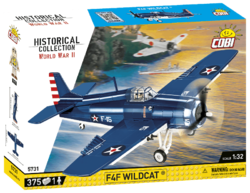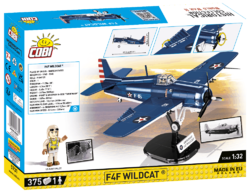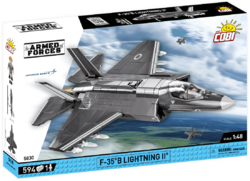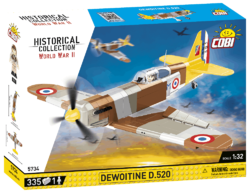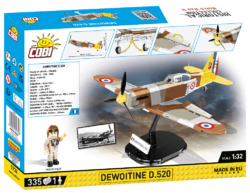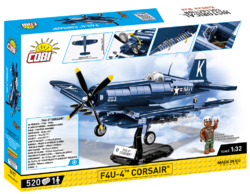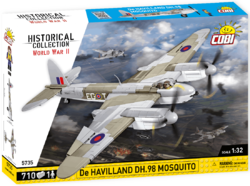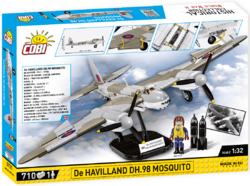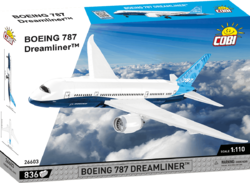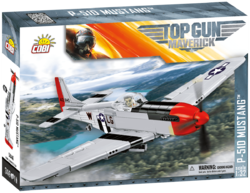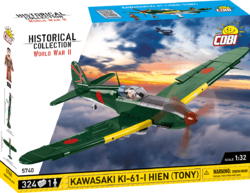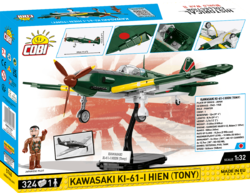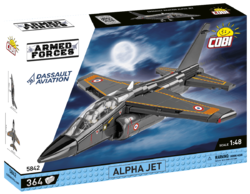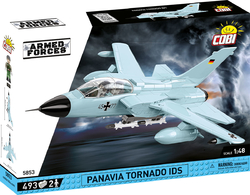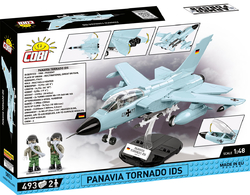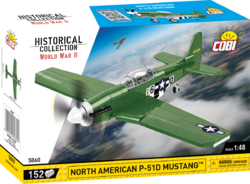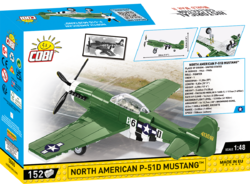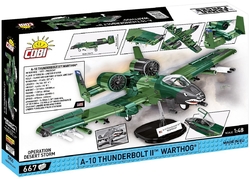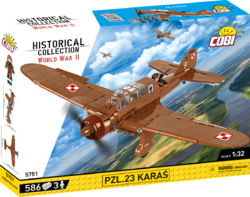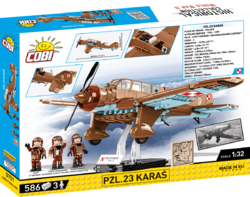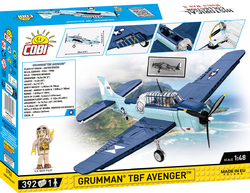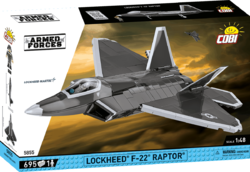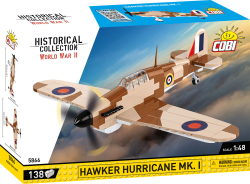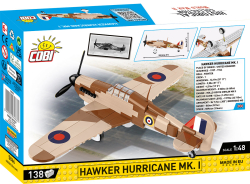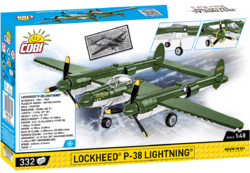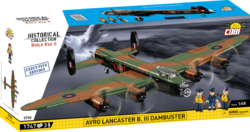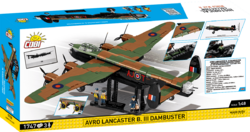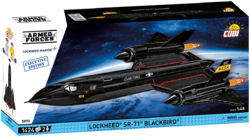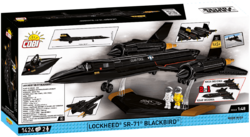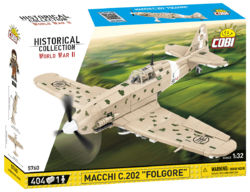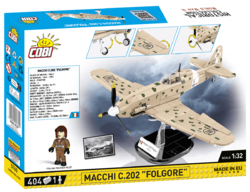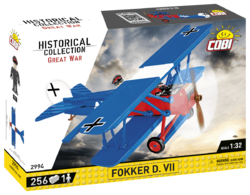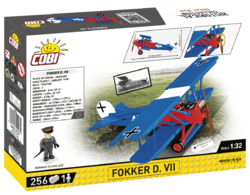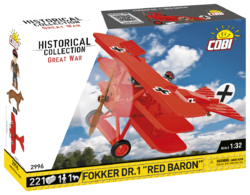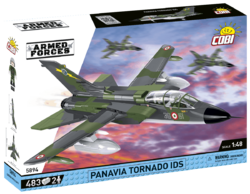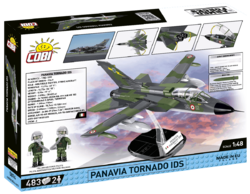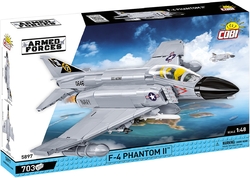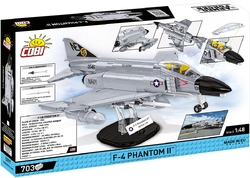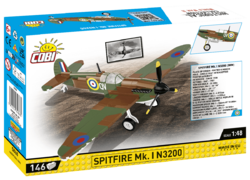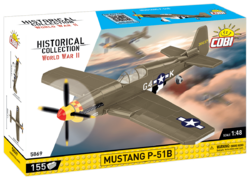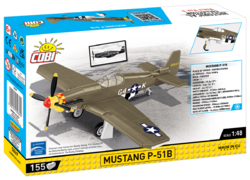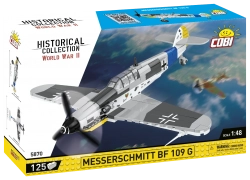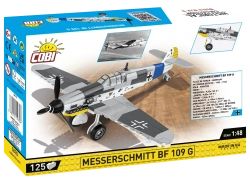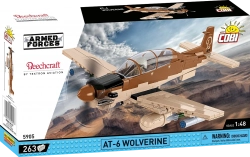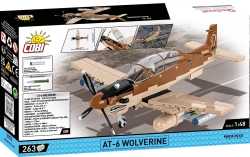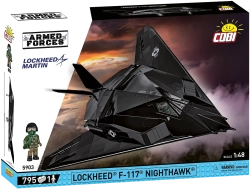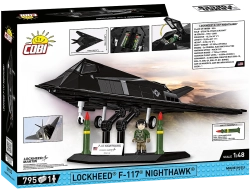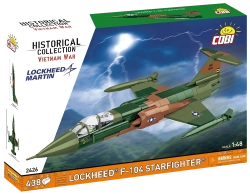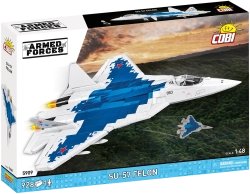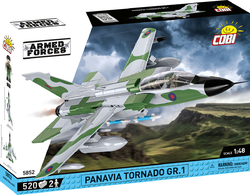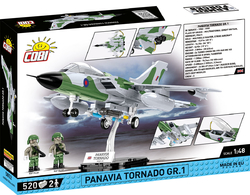A model kit of the American F-5A fighter plane in the colors of the Norwegian Air Force. The model has adjustable rear control surfaces, removable undercarriage legs and a specially modified figure for seating in the cockpit. An additional fuel tank is suspended under the fuselage. The assembled model can stand on its own chassis or on a stand with a description included in the package. 1:48 scale kits bring the same joy but more shelf space. The model is produced under the official license of Northrop Grumman.
Show more
0 %
(0 Ranking)
799 Kč
pcs
Add to Cart
In stock - ready to ship (2 pcs)
| List Number: | COBI-5858 |
| EAN: | 5902251058586 |
| Warranty: | 24 months |
| Manufacturer: | COBI |
| Loyalty Points: | 5 |
| Price excluding VAT: | 660,27 Kč |
Description
Parametres
Files and Links
Discussion
Reviews

You know that:
- Development of the aircraft began in 1956 as a smaller and cheaper alternative to the F-4 Phantom.
- Since the United States had no need for such an aircraft in the 1960s, the F-5 became a great export item.
- Compact, light, fast, and maneuverable, the aircraft's low acquisition and operating costs attracted the attention of many countries.
- After flight tests in 1959, orders poured in. A total of 36 countries added F-5 fighters to their arsenals.
- The F-5 was actually an excellent aircraft, popular with pilots and ground personnel for its ease of maintenance. In 1970, the F-5 even won an international fighter competition.
- Over time, the machine was upgraded, with various versions being created as a trainer special, a radar reconnaissance special, or machines capable of in-flight refueling for the U.S. Navy.
- The aircraft earned the name Freedom Fighter during the defense of South Vietnam against the Viet Cong.
- Licensed production also took place in Spain, Taiwan, Switzerland and South Korea,
- The aircraft was in production for nearly 30 years, with a total of about 1,400 produced.
Technical parameters:
- dimensions: wingspan 7.9 m, length 14.45 m, height 4.08 m
- propulsion 2x GE J85-GE-21B twin-jet engines, each with a thrust of 15.5 kN
- empty weight 3 667 kg, maximum take-off weight 11 190 kg
- range 3 720 km with overhead tanks
- maximum speed 1,734 km/h
- maximum flight level 15 800 m
- climb rate 146 m/s
- armament 2x Pontiac M39A2 20 mm cannon + 3 200 kg bombs
- crew 1
North Vietnamese Air Force Commander Nguyen Huu An:
"The F-5 machines were a great challenge for us. It was an agile and powerful aircraft. It was hard to win an air battle. The only strategy that made sense was to just get out of there fast."
Assembly instructions
| Number of figurines | 0 pcs |
|---|---|
| Version (series) | 02/2024 |
| Dimensions after assembly | 18 x 29 x 10 cm |
| Scale | 1:48 |
| Box dimensions | 34 x 24 x 6 cm |
| Number of pieces | 358 pcs |
| Package weight | 445 g |
| Recommended age | 6+ |
| Collection | Armed Forces |
| Contains luminous blocks | No |
| Material | Plastic |
| Compatible with other brand of kits | Yes |
Discussion is empty.
There is no review for product yet









































